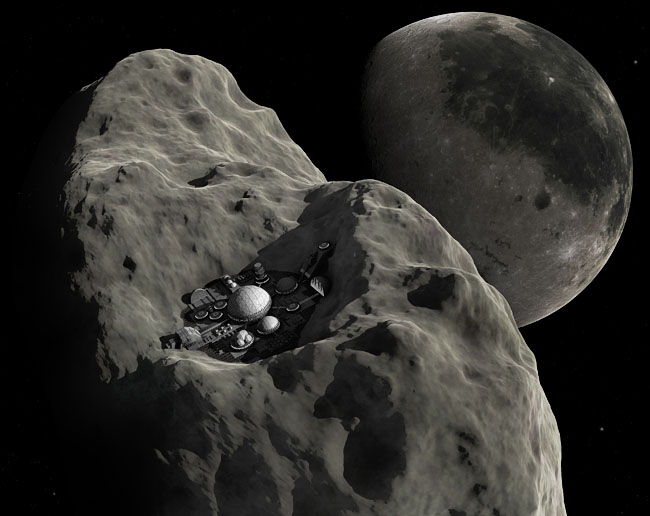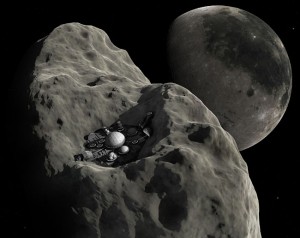November 22, 2013 – When I started writing the date just a second ago I put the year as 1963. Just shows you how certain moments in time get embedded in memory so deeply that you automatically type something without thinking. Of course November 22, 1963 refers to the day John Fitzgerald Kennedy was assassinated in Dallas, Texas, a day I will always remember.
But this story isn’t about the assassination but rather reports a story that purportedly appeared recently in the Voice of Russia stating that Sergey Antonenko, head of the Khrunichev State Space Research and Production Center, (the builders of the Proton rocket and the Zarya module that was the first piece of the International Space Station) believes that colonizing asteroids, hitching a ride on them, and using them as closed ecosystems for human habitation may be the smartest way for us to become a space faring species.
In his comments he argues that there are at least 10,000 near-Earth asteroids (NEOs) and over 2 million in the Asteroid Belt. The total mass of all of these space rocks equals more than three Earths so that means lots of material to exploit. And many of the NEOs follow long elliptical orbits that take them outward to the proximity of Mars and Jupiter which means we can ride them to other places in the Solar System.
Antonenko believes we can inhabit some of these space rocks and build closed-cycle ecosystems where humans could live quite comfortably. Today the United States, Russia and China are attempting to develop closed-cycle environments that are self sustaining, a necessary step for any successful long-term habitation of Deep Space, the Moon and Mars. Antonenko sees asteroids as the most suitable candidates for our long-term colonization of space beyond Earth orbit.
There has been lots of talk about mining asteroids and using the materials to support space habitations. But less has been said about inhabitin one of these rocks to make it a home in space. The idea has lots of merit when you consider the challenge of cosmic radiation and how an asteroid could effectively provide the type of shielding needed for our long-term space survival.
Of course NASA has an asteroid capture mission on the drawing boards but the goal there is to study and test mining technologies to see if we can use these rocks to build space infrastructure. What Antonenko has in mind goes much further.












